Conservation of Wetlands
Conservation of Wetlands
Save our wetlands
 Wetlands are areas of land where the water level remains near or above the surface of the ground for most of the year.
Wetlands are areas of land where the water level remains near or above the surface of the ground for most of the year.
The association of man and wetlands is ancient, with the first signs of civilization originating in wetland habitats such as the flood plains of the Indus, the Nile Delta and the Fertile Crescent of the Tigris and Euphrates rivers.
Wetlands cover about 6% of the earth’s land surface. There are several kinds of wetlands such as marshes, swamps, lagoons, bogs, fens and mangroves. They are home to some of the richest, most diverse and fragile of natural resources.
As they support a variety of plant and animal life, biologically they are one of the most productive ecosystems.
Wetlands of India
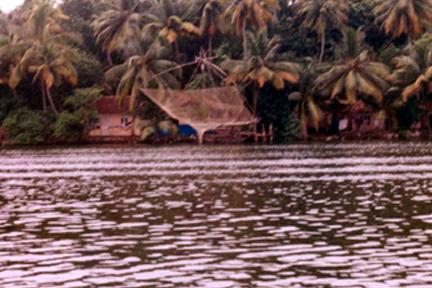 India has a wealth of wetland ecosystems distributed in different geographical regions. Most of the wetlands in India are directly or indirectly linked with major river systems such as the Ganges, Cauvery, Krishna, Godavari and Tapti. India has totally 27, 403 wetlands, of which 23,444 are inland wetlands and 3,959 are coastal wetlands. According to the Directory of Asian Wetlands (1989), wetlands occupy 18.4% of the country’s area (excluding rivers), of which 70 % are under paddy cultivation. In India, out of an estimated 4.1 mha (excluding irrigated agricultural lands, rivers and streams) of wetlands, 1.5 mha are natural, while 2.6 mha are manmade. The coastal wetlands occupy an estimated 6,750 sq km and are largely dominated by mangrove vegetation. About 80% of the mangroves are distributed in the Sunderbans of West Bengal and the Andaman and Nicobar Islands, with the rest in the coastal states of Odisha, Andhra Pradesh, Tamil Nadu, Karnataka, Kerala, Goa, Maharashtra and Gujarat.
India has a wealth of wetland ecosystems distributed in different geographical regions. Most of the wetlands in India are directly or indirectly linked with major river systems such as the Ganges, Cauvery, Krishna, Godavari and Tapti. India has totally 27, 403 wetlands, of which 23,444 are inland wetlands and 3,959 are coastal wetlands. According to the Directory of Asian Wetlands (1989), wetlands occupy 18.4% of the country’s area (excluding rivers), of which 70 % are under paddy cultivation. In India, out of an estimated 4.1 mha (excluding irrigated agricultural lands, rivers and streams) of wetlands, 1.5 mha are natural, while 2.6 mha are manmade. The coastal wetlands occupy an estimated 6,750 sq km and are largely dominated by mangrove vegetation. About 80% of the mangroves are distributed in the Sunderbans of West Bengal and the Andaman and Nicobar Islands, with the rest in the coastal states of Odisha, Andhra Pradesh, Tamil Nadu, Karnataka, Kerala, Goa, Maharashtra and Gujarat.
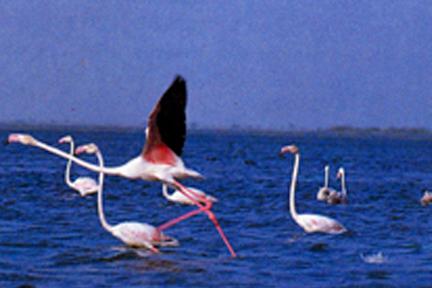 Wetlands in southern peninsular India are mostly manmade and are known as yeris (tanks). They are constructed in every village and provide water for various human needs, besides serving as nesting, feeding and breeding sites for a large variety of bird species. Point Calimere in Tamilnadu; Ashtamudi, Sasthamkotta and Vembanad Kol lakes in Kerala; and Kolleru lake in Andhra Pradesh are some of the natural wetland sites in South India.
Wetlands in southern peninsular India are mostly manmade and are known as yeris (tanks). They are constructed in every village and provide water for various human needs, besides serving as nesting, feeding and breeding sites for a large variety of bird species. Point Calimere in Tamilnadu; Ashtamudi, Sasthamkotta and Vembanad Kol lakes in Kerala; and Kolleru lake in Andhra Pradesh are some of the natural wetland sites in South India.
India’s wetlands are generally differentiated into 8 categories depending on their regional presence (Scott, 1989):
- The reservoirs of the Deccan Plateau in the south, together with the lagoons and other wetlands of the southwest coast.
- The vast saline expanses of Rajasthan, Gujarat and the Gulf of Kutch.
- The freshwater lakes and reservoirs from Gujarat eastwards through Rajasthan (Keoladeo Ghana National Park) and Madhya Pradesh.
- The delta wetlands and lagoons of India’s east coast (Chilka Lake).
- The freshwater marshes of the Gangetic Plains and the floodplains of the Brahmaputra.
- The marshes and swamps in the hills of northeast India and the Himalayan foothills.
- The lakes and rivers of the mountain region of Kashmir and Ladakh.
- The mangroves and other wetlands of the Andaman and Nicobar Islands.
Importance of wetlands
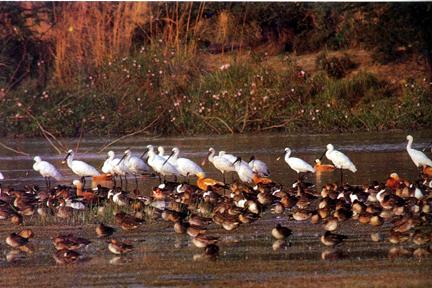 Wetland systems directly and indirectly support lakhs of people, providing goods and services to them. They help check floods, prevent coastal erosion and mitigate the effects of natural disasters like cyclones and tidal waves. They store water for long periods.
Wetland systems directly and indirectly support lakhs of people, providing goods and services to them. They help check floods, prevent coastal erosion and mitigate the effects of natural disasters like cyclones and tidal waves. They store water for long periods.
Their capacity during heavy rainfall to retain excess floodwater that would otherwise cause flooding results in maintaining a constant flow regime downstream, preserving water quality and increasing biological productivity for both aquatic life as well as human communities of the region. Inundated wetlands are very effective in storing rainwater and are the primary source for recharging ground water aquifers.
Many wading birds and waterfowl like egrets, herons and cranes nest in wetlands. Wetlands also provide food and shelter for mammals. They act as natural filters and help remove a wide range of pollutants from water, including harmful viruses from sewage and heavy metals from industries.
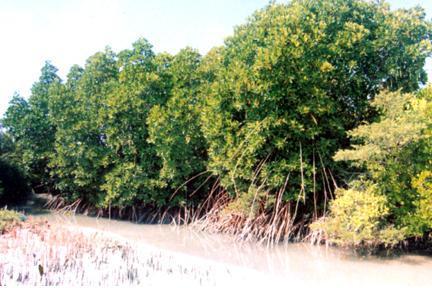 Wetlands retain nutrients by storing eutrophic parameters like nitrogen and phosphorus and accumulating them in the sub-soil, thereby decreasing the potential for eutrophication.
Wetlands retain nutrients by storing eutrophic parameters like nitrogen and phosphorus and accumulating them in the sub-soil, thereby decreasing the potential for eutrophication.
Mangrove forests are valued for production of fish and shell-fish, live-stock fodder, fuel and building materials, local medicine, honey and bees-wax and for extracting chemicals used in tanning leather, farming and fisheries production have replaced many mangrove areas.
Moreover, significant socio-economic values like constant water supply, fisheries, fuelwood, medicinal plants, livestock grazing, agriculture, energy resource, wildlife resource, transport, recreation and tourism are noteworthy.
Threats to wetlands
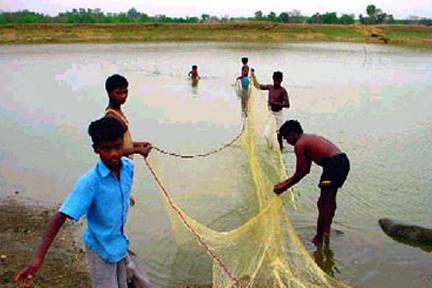 The Wildlife Institute of India’s survey reveals that 70-80% of individual freshwater marshes and lakes in the Gangetic flood plains have been lost in the last five decades. At present, only 50 percent of India’s wetlands remain. They are disappearing at a rate of 2% to 3% every year. Indian mangrove areas have been halved almost from 700,000 hectares in 1987 to 453,000 hectares in 1995 (Sustainable Wetlands, Environmental Governance-2, 1999). A recent estimate based on remote sensing shows only 4000 sq. km area of mangrove resource in India.
The Wildlife Institute of India’s survey reveals that 70-80% of individual freshwater marshes and lakes in the Gangetic flood plains have been lost in the last five decades. At present, only 50 percent of India’s wetlands remain. They are disappearing at a rate of 2% to 3% every year. Indian mangrove areas have been halved almost from 700,000 hectares in 1987 to 453,000 hectares in 1995 (Sustainable Wetlands, Environmental Governance-2, 1999). A recent estimate based on remote sensing shows only 4000 sq. km area of mangrove resource in India.
The loss of wetlands leads to environmental and ecological problems, which have a direct impact on the socio-economic benefits of the associated populace. Serious consequences, including increased flooding, species decline, deformity, or extinction and decline in water quality could result. Wetlands are also important as a genetic reservoir for various species of plants including rice, which is a staple food for 3/4th of the world’s population.
|
Urbanization |
Wetlands near urban centres are under increasing developmental pressure for residential, industrial and commercial facilities. Urban wetlands are essential for preserving public water supplies. |
|
Anthropogenic activities |
Due to unplanned urban and agricultural development, industries, road construction, impoundment, resource extraction and dredge disposal, wetlands have been drained and transformed, causing substantial economic and ecological losses in the long term. |
|
Agricultural activities |
Following the Green Revolution of the 1970s, vast stretches of wetlands have been converted to paddy fields. Construction of a large number of reservoirs, canals and dams to provide for irrigation significantly altered the hydrology of the associated wetlands. |
|
Hydrologic activities |
Construction of canals and diversion of streams and rivers to transport water to lower arid regions for irrigation has altered the drainage pattern and significantly degraded the wetlands of the region. |
|
Deforestation |
Removal of vegetation in the catchment leads to soil erosion and siltation |
|
Pollution |
Unrestricted dumping of sewage and toxic chemicals from industries has polluted many freshwater wetlands |
|
Salinization |
Over withdrawal of groundwater has led to salinization |
|
Aquaculture |
Demand for shrimps and fishes has provided economic incentives to convert wetlands and mangrove forests to develop pisciculture and aquaculture ponds. |
|
Introduced species |
Indian wetlands are threatened by exotic introduced plant species such as water hyacinth and salvinia. They clog waterways and compete with native vegetation. |
|
Increased air temperature; shifts in precipitation; increased frequency of storms, droughts, and floods; increased atmospheric carbon dioxide concentration; and sea level rise could also affect wetlands. |
Conservation of wetlands
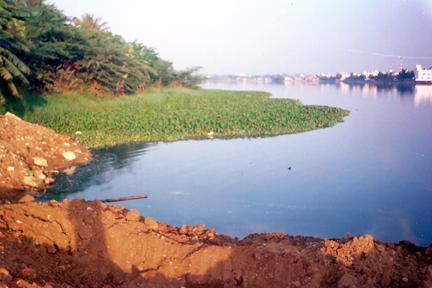 Efforts to conserve wetlands in India began in 1987 and the main focus of governmental efforts was on biological methods of conservation rather than adopting engineering options. A national wetland-mapping project has also been initiated for an integrated approach on conservation. In certain wetland sites it is heartening to see the Government, NGOs and local community coming together to save our wetlands and thus realize the objectives of Ramsar Convention.
Efforts to conserve wetlands in India began in 1987 and the main focus of governmental efforts was on biological methods of conservation rather than adopting engineering options. A national wetland-mapping project has also been initiated for an integrated approach on conservation. In certain wetland sites it is heartening to see the Government, NGOs and local community coming together to save our wetlands and thus realize the objectives of Ramsar Convention.
The National Committee on Wetlands, Mangroves and Coral Reefs, constituted for advising the Government on appropriate policies and measures to be taken for conservation and management of the wetlands, has identified 93 wetlands for conservation and management on priority basis.
India currently has 85 sites designated as Wetlands of International Importance (Ramsar Sites), with a surface area of over 1.34 million hectares.
|
Sr.No. |
Name of Wetland |
State / UT |
Area (ha) |
| 1 | Asan Conservation Reserve |
Uttarakhand |
444 |
| 2 |
Ashtamudi Wetland |
Kerala |
61,400 |
| 3 | Beas Conservation Reserve |
Punjab |
6,429 |
| 4 | Bhindawas Wildlife Sanctuary |
Haryana |
412 |
| 5 |
Bhitarkanika Mangroves |
Odisha |
65,000 |
| 6 |
Bhoj Wetland |
Madhya Pradesh |
3,201 |
| 7 |
Chandertal Wetland |
49 |
|
| 8 |
Chilika Lake |
Orissa |
1,16,500 |
| 9 |
Deepor Beel |
Assam |
4,000 |
| 10 |
East Calcutta Wetlands |
West Bengal |
12,500 |
| 11 |
Harike Lake |
Punjab |
4,100 |
| 12 |
Hokera Wetland |
Jammu & Kashmir |
1,375 |
| 13 | Kabartal Wetland |
Bihar |
2,620 |
| 14 | Karikili Bird Sanctuary |
Tamil Nadu |
58.4 |
| 15 |
Kanjli |
Punjab |
183 |
| 16 |
Keoladeo National Park |
Rajasthan |
2,873 |
| 17 | Keshopur-Miani Community Reserve |
Punjab |
344 |
| 18 |
Kolleru Lake |
Andhra Pradesh |
90,100 |
| 19 |
Lonar Lake |
Maharashtra |
427 |
| 20 |
Loktak Lake |
Manipur |
26,600 |
| 21 | Nalsarovar |
Gujarat |
12,000 |
| 22 | Nandur Madhameshwar |
Maharashtra |
1,437 |
| 23 | Nangal Wildlife Sanctuary |
Punjab |
116 |
| 24 | Nawabganj Bird Sanctuary |
225 |
|
| 25 | Pallikaranai Marsh Reserve Forest |
Tamil Nadu |
1,247.5 |
| 26 | Parvati Arga Bird Sanctuary |
Uttar Pradesh |
722 |
| 27 | Pichavaram Mangrove |
Tamil Nadu |
1,478.6 |
| 28 |
Point Calimere Wildlife and Bird Sanctuary |
Tamil Nadu |
38,500 |
| 29 |
Pong Dam Lake |
Himachal Pradesh |
15,662 |
| 30 |
Renuka Wetland |
Himachal Pradesh |
20 |
| 31 |
Ropar |
Punjab |
1,365 |
| 32 | Rudrasagar Lake |
Tripura |
240 |
| 33 | Saman Bird Sanctuary |
Uttar Pradesh |
526 |
| 34 |
Samaspur Bird Sanctuary |
Uttar Pradesh |
799 |
| 35 |
Sambhar Lake |
Rajasthan |
24,000 |
| 36 | Sandi Bird Sanctuary |
Uttar Pradesh |
309 |
| 37 | Sarsai Nawar Jheel |
Uttar Pradesh |
161 |
| 38 |
Sasthamkotta Lake |
Kerala |
373 |
| 39 | Sultanpur National Park |
Haryana |
2,457 |
| 40 | Sundarban Wetland |
West Bengal |
4,23,000 |
| 41 | Surinsar-Mansar Lakes |
Jammu & Kashmir |
350 |
| 42 | Sur Sarovar |
Uttar Pradesh |
431 |
| 43 | Thol Lake Wildlife Sanctuary |
Gujarat |
2,458 |
| 44 | Tso Kar Wetland Complex |
Ladakh |
9,577 |
| 45 |
Tsomoriri |
Jammu & Kashmir |
12,000 |
| 46 | Upper Ganga River |
Uttar Pradesh |
26,590 |
| 47 |
Vembanad-Kol Lake |
Kerala |
1,51,250 |
| 48 | Wadhvana Wetland |
Gujarat |
2,454 |
| 49 |
Wular Lake |
Jammu & Kashmir |
18,900 |
| 50 |
Khijadiya Wildlife Sanctuary |
Gujarat |
511.70 |
| 51 |
Bakhira Wildlife Sanctuary |
Uttar Pradesh |
2,894 |
| 52 |
Haiderpur Wetland |
Uttar Pradesh |
6,908 |
| 53 |
Sakhya Sagar |
Madhya Pradesh |
248 |
| 54 |
Pala Wetland |
Mizoram |
1,850 |
| 55 |
Nanda Lake |
Goa |
42 |
| 56 |
Gulf of Mannar Marine Biosphere Reserve |
Tamil Nadu |
52,671.9 |
| 57 |
Khijadia Wildlife Sanctuary |
Gujarat |
511.7 |
| 58 |
Koonthankulam Bird Sanctuary |
Tamil Nadu |
72 |
| 59 |
Satkosia Gorge |
Odisha |
98,196.7 |
| 60 |
Sirpur Wetland |
Madhya Pradesh |
161 |
| 61 |
Udhayamarthandapuram Bird Sanctuary |
Tamil Nadu |
43.8 |
| 62 |
Vedanthangal Bird Sanctuary |
Tamil Nadu |
40.3 |
| 63 |
Vellode Bird Sanctuary |
Tamil Nadu |
77.2 |
| 64 |
Vembannur Wetland Complex |
Tamil Nadu |
19.7 |
| 65 |
Tampara Lake |
Odisha |
300 |
| 66 |
Hirakud Reservoir |
Odisha |
65400 |
| 67 |
Ansupa Lake |
Odisha |
231 |
| 68 |
Yashwant Sagar |
Madhya Pradesh |
822.90 |
| 69 |
Chitrangudi Bird Sanctuary |
Tamil Nadu |
260.47 |
| 70 |
Suchindram Theroor Wetland Complex |
Tamil Nadu |
94.23 |
| 71 |
Vaduvur Bird Sanctuary |
Tamil Nadu |
112.64 |
| 72 |
Kanjirankulam Bird Sanctuary |
Tamil Nadu |
96.89 |
| 73 |
Thane Creek |
Maharashtra |
6521.08 |
| 74 |
Hygam Wetland Conservation Reserve |
Jammu and Kashmir |
801.82 |
| 75 |
Shallbugh Wetland Conservation Reserve |
Jammu and Kashmir |
1675 |
| 76 |
Aghanashini Estuary |
Karnataka |
4801 |
| 77 |
Ankasamudra Bird Conservation Reserve |
Karnataka |
98.8 |
| 78 |
Magadi Kere Conservation Reserve |
Karnataka |
54.4 |
| 79 |
Karaivetti Bird Sanctuary |
Tamil Nadu |
453.7 |
| 80 |
Longwood Shola Reserve Forest |
Tamil Nadu |
116 |
| 81 |
Nakti Bird Sanctuary |
Bihar |
333 |
| 82 |
Nagi Bird Sanctuary |
Bihar |
206 |
| 83 |
Nanjarayan Bird Sanctuary |
Tamil Nadu |
125.865 |
| 84 |
Kazhuveli Bird Sanctuary |
Tamil Nadu |
5151.6 |
| 85 |
Tawa Reservoir |
Madhya Pradhesh |
20050 |
For more details, click here
Conclusion
Wetlands jurisdiction is diffused and falls under various departments like agriculture, fisheries, irrigation, revenue, tourism, water resources and local bodies. For instance, all mangroves in the country fall under the direct control of forest department. The lack of a comprehensive wetland policy, with each department having its own developmental priorities, works against the interests of conservation of wetlands resulting in intended or unintended spill-over that further aggravates the problem.
Wetland ecosystems are interconnected and interactive within a watershed. In India, unplanned urbanization and a growing population have taken their toll on wetlands. To counter these, management of wetlands has to be an integrated approach in terms of planning, execution and monitoring. Effective tie-ups of trained academicians and professionals, including ecologists, hydrologists, economists, watershed management specialists, planners and decision makers must be linked with local expertise for overall management of wetlands. All these would increase knowledge and understanding of wetlands and evolve more comprehensive and long-term conservation and management strategies. Spreading awareness by initiating educational programs about the importance of wetlands in local schools, colleges and among the general public in the vicinity of the water bodies, besides constant monitoring of wetlands for their water quality, would provide vital inputs to safeguard the wetlands from further deterioration.
Last Modified : 8/16/2024
This topic provides information about the World We...
